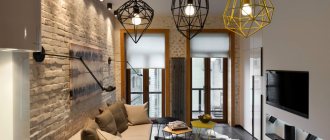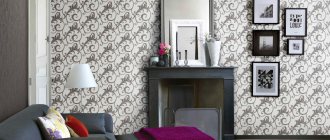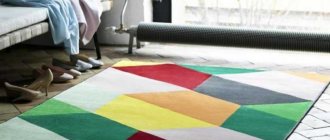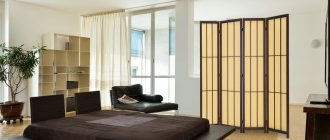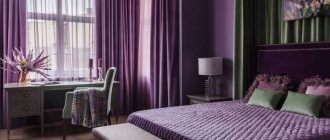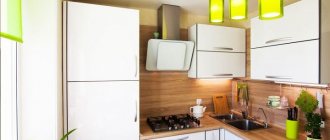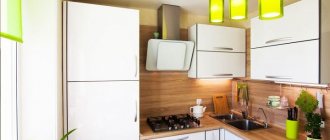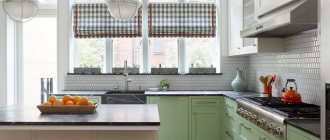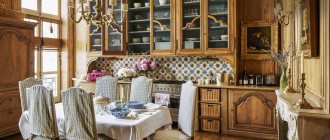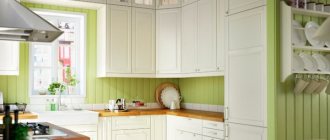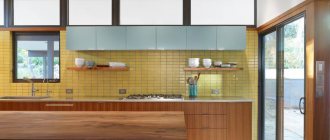The Mediterranean style, in addition to summer-sea design motifs, includes interesting traditions and rich flavor of countries such as France, Egypt, Turkey, Greece, Italy, Spain. This cozy and at the same time contrasting interior can please, and in the cold season, with a lack of sunlight, it can make up for this deficiency.
Features of the Mediterranean style in the interior
This style has its own distinctive characteristics and combines maximum comfort, laconic functionality and romantic aesthetics. Mediterranean style can be recognized by the following features:
- Combination of two colors. Any room can be turned into a work of art by following this simple rule. Excellent options for combining shades are: green and beige, turquoise and peach, blue and white.
- Sunny color scheme. You can fill a room with light with the proper selection of light shades of furniture, textiles, and decoration. The following colors will look great: red, golden, white, sand, peach, olive, light green, light blue, lavender, turquoise.
- Presence of mosaic elements. For Mediterranean motifs, such a creative option is considered optimal. This decor is most often used in the hallway or kitchen. Usually small ceramic tiles are used.
- Use of natural materials. It is necessary to try to ensure that the decor, decoration, and furniture are made from the following materials: metal, stone, glass, wood, silver.
- High ceiling. This feature can be considered one of the conditions for successful interior design. The color range ranges from sand to milky.
- Light curtains. The fabric should be light and light. Natural shades and airy materials are best suited. Draped curtains are not allowed. Small patterns will look good.
- Original furniture upholstery. With the help of the necessary set of paints and applications, you can show your creativity.
- Minimum number of accessories. The light atmosphere should not be weighed down by a large number of decorative details. Functional and laconic things that complement the overall picture will be a good solution - paintings, candles, watches.
Color palette
Mediterranean style is characterized by a combination of light and rich tones. Bright and very dark colors are not in favor in such an interior; at most, they may be slightly interspersed in the ornament or design of the frames. The dominant colors, as well as the rules for their combination, depend on the regional style.
Italian design uses mainly warm soft natural tones - beige, olive, golden, terracotta, grass, different shades of brown. Red can also be used in small quantities. Instead of sharp contrasts, nuanced combinations of similar shades are used.
In Greek design, along with warm ones, cool tones are also used, especially different shades of blue and blue. Greek style prefers contrasting combinations.
Materials and finishing
In addition to the correct choice of furniture, textiles, and color palette, it is necessary to create a competent finish. In total, this will provide the necessary compliance with the thematic direction of the Mediterranean style.
Ceiling
When finishing the ceiling in a Mediterranean style, sunny light colors should prevail. High-quality whitewashing will be an aesthetic and simple solution. Decorating with wooden beams will look very original.
Walls
When decorating the walls in a room, you need to use your imagination. Colored small mosaics and decorative plaster will become the right elements. Each of these elements skillfully emphasizes the beauty of the home.
Floor
Wood is the most suitable option. Behind it come laminate and tile. The shade of the floor should be one or two levels different from the walls. The result will be a slightly noticeable contrast and an excellent combination.
What are the varieties?
Mediterranean interior design is divided into several types.
Italian motives
These interiors are characterized by a combination of warm light colors and the use of natural materials.
The color scheme is somewhat soft: pure and sharp tones (“like from a tube”), and very dark ones are not used. Similar combinations of tones are often used, but contrasting ones are rarely used.
In Italy, finishing materials with a rough surface are popular: decorative plaster (including Venetian), rough varieties of tiles, mosaics and masonry.
Gypsum mixtures may contain flakes of marble, travertine or sandstone. Plastered surfaces can be smooth or have a painted pattern (for example, in the faience style).
Sometimes different finishing materials are used to decorate the walls of a room. At the same time, it is important not to overdo it with their quantity, especially if we are talking about a small room: in such cases it is better to limit yourself to a contrasting apron or focus attention on a small fragment of the wall.
The Italian-style rooms feature large windows and plenty of light. Windows are often installed in the bathroom.
The furniture is generally simple, but quite massive, made of wood or metal with forged elements; The layout of the room is generally simple.
The living room has a fireplace. The premises are decorated with potted plants, clay and wooden figurines, and wicker baskets.
Spanish style
The Spanish character of the Mediterranean interior is functionality and comfort. The almost complete absence of wood is compensated by the widespread use of stone both as a building material and as a decorative element. In addition, plasticine, natural fabric and forged metal are used in the decor. Eco-friendly materials are combined with a natural color palette. Bright green and scarlet spots are rare. The furniture is predominantly dark in color.
Smoothness is a feature of the Spanish style. Complex geometric shapes with rounded corners are used in the design of furniture, fittings and accessories. In Spanish interiors, the ceilings are often domed or tunnel-shaped, and the walls are decorated with arched niches. An interesting design technique inherent in the Spanish interior is the design of the ceiling as an open brick or its full glazing.
The fireplace serves as a family hearth. It becomes a kind of center of interior design. The appliances blend harmoniously with antique rustic furnishings.
Greek motifs
On the contrary, the Greek style is characterized by the active use of cold tones. The color scheme of the Greek flag - white and blue or dark blue - is particularly common.
Shades of green and yellow are also popular. The main shade of the wall decoration is milky white. Black can also be used in small quantities (decorative elements, one of the colors in a painting), but there is never too much of it.
Despite the cool tones, the rooms have plenty of sun thanks to the large windows. Windows and doors are often arch-shaped.
Natural materials with a relief surface are used to decorate the walls and floors. When finishing the walls, you can also use a combination of materials: the upper parts are finished with textured plaster, the lower parts are finished with wooden panels.
Furniture in the Greek style is often low. It is usually made of wood and has carved elements (legs, decorations on the facades). Wicker rattan chairs are popular.
Artificial aging of furniture and other wooden products (for example, photo frames and paintings) is often used.
The craft was created in Greece, so ceramic plates and other crafts would be appropriate in the room. Candelabra with candles, sea pebbles, and decorative greenery will complement the interior.
A Greek-style private house often has a flat roof on which the family gathers in the evening to relax. The walls are decorated with light plaster and blue paint. The door may be made of dark wood. Forged structures, especially lamps, are appropriate in the design of such a house.
Turkish motifs in the interior
Some southern styles (such as Moroccan) are a mixture of Mediterranean and Arabic traditions. Arabic influence is manifested in the use of folk crafts, ceramics with Arabic designs as lining, homemade paths or massive carpets, and decorative pillows.
Interior walls are usually white and smooth. The windows and doors are arched. Tiles with Arabic motifs can be used not only in the bathroom or in the design of a kitchen apron, but also in other rooms.
Significant Arab influence can be seen in Spain. These interiors use less wood than Italian and Greek interiors, but make extensive use of ceramics, pottery, stone and textiles. The houses have low ceilings and very simple furniture.
Furniture
In Mediterranean design, room furnishings should not be very strict and conservative. The composition of the furniture, shapes, and colors are completely different. Untreated wood items, glass sideboards, metal stands, simple chests of drawers, and wooden chests for large clothing are considered popular aesthetic solutions.
Characteristic features of style
The Mediterranean direction is very elegant and interesting. It should have an abundance of tenderness and airiness. The bias is towards a variety of climatic conditions, so the direction is partially combined with modernism. The proposed interior flow consists of the following features:
- the presence of large and bright rooms with spacious windows;
- non-toxic paints, wood, marble, and natural stone are used for surface finishing;
- the use of natural textiles - an airy, light canopy, light tulle, decorative pillows made of cotton and linen;
- sea beach colors with decor from underwater shells, corals, plants imitating algae;
- installation of functional and essential furniture;
- operation of lighting devices: wall or ceiling with forging elements.
Be sure to use patterns. They dictate the Arabic decorative style. All lines in the ornaments are smooth and smooth, all designs are associated with the sea, the beach, and clean summer air.
Bright living room in a Mediterranean interior with large arched windows Source artsten.ru
Rooms with arched zoning for a Mediterranean interior Source bucwar.ru Semi-modern living room with a Mediterranean twist Source dizainvfoto.ru
Lighting and decor
An individual approach and imagination will help to embody the Mediterranean mood. Landscape paintings (coast, ocean, sea), handmade accessories, glass vases, colorful photo frames with blue shades, fresh flowers, panels of shells, sea stones of various shapes are used as decor. There should be a lot of light - lamps and floor lamps, spotlights, wall lamps, neat chandeliers.
It is not necessary to use the motifs of one country when decorating a home. Each room of an apartment or house can be designed in completely different traditions.
Home improvement options
We invite you to consider interesting options for home improvement, shrouded in the charm of the warm sea and summer.
Living room
To decorate your living room, choose a spacious and bright room with large windows. It should become the hallmark of the house and embody the intended environment as effectively as possible. Blue and blue colors against the background of the main white color will help to reveal the Greek look of the direction.
- Paint the ceiling and walls white, adding vertical stripes of ultramarine color to one or two of them. This solution will visually “raise” the ceiling.
- Finish the floor with a wooden board in the style of a ship's deck, and lay a striped carpet with minimal pile on top.
- Arrange the sofa area - beige sofas and soft chairs with a fabric surface, complemented by decorative pillows in yellow, light blue and dark blue.
- Place a coffee table made of cream-colored wood near the upholstered furniture.
- Place decor on the table, for example, corals in a decorative vase with a wide neck, more like a plate.
The decoration of the living room design in the Mediterranean genre will be plants - for the living room one large (or several) palm tree in a pot with wicker wood will be enough.
You can hang oil paintings on the walls depicting the southern coasts of Italy, Greece or Spain. Most often it is a calm sea, a sandy beach, sailing yachts, bushes and low trees against the backdrop of small houses.
Bedroom
Since the Mediterranean bedroom decor includes many summer elements, do not be afraid to use shades of blue and blue - the room will not become “cold”. If you arrange your bedroom correctly, its furnishings will be saturated with the sea breeze, sunlight and the soothing breath of warm summer.
- Plaster the walls with beige plaster, make the surface intentionally rough or apply patterns with smoothed lines.
- Make the ceiling several shades lighter.
- It is advisable to make the floor from balsa wood, which perfectly dampens noise while walking and is pleasant to the touch.
- Lay a small blue or white-blue carpet on the floor.
- Make the doors to the bedroom wooden and paint them in a light blue tone.
- Complete the double bed with a canopy made of light translucent white fabric.
- Attach the canopy to the blue metal frame.
- Lay down a blue and white throw and accessorize the bed with lemon, olive and yellow throw pillows.
A low wooden chest of drawers and bedside tables in blue or cream shades are suitable for the bedroom. The bedroom walls can be decorated with photographs in marine frames or paintings with seascapes and sailing yachts.
Kitchen
The Mediterranean setting in the kitchen interior should be associated not only with the warm sea breeze, but also with Mediterranean cuisine - olives, fresh vegetables and fruits, fish and seafood, olive oil. The environment should awaken the appetite and evoke positive emotions.
- Decorate the walls with ceramic tiles printed with flowers or floral patterns in an Arabic style.
- The main colors of the tiles are blue, white, blue and gold.
- Paint the ceiling white and complement it with blue wood cross beams.
- Finish the floor with brown or wood-look tiles.
- The kitchen set can be placed in white, and the dining table can have blue legs and a natural wood-colored surface.
- Choose wooden chairs, preferably olive.
- Complement large, bright windows with light olive tulle.
As decoration, use ceramic dishes and vases with patterns characteristic of the direction.
Bathroom
Let's consider the Italian version of arranging a bathroom.
- To finish the walls and floors, use beige tiles with a brown frieze. One of the walls can be finished with natural stone.
- Make the ceiling also beige, but a few shades lighter.
- The window can be in the shape of an arch with a brown frame.
- The outside of the bathtub can be decorated with mosaics to match the walls.
- Complete the area with the washbasin with a rectangular mirror in a brown frame (to match the frieze and window trim).
- You can store your bath accessories in a beige wooden lacquered chest of drawers.
- Complete the decor with olive-colored ceramic containers for liquid soap and toothbrushes.
The design of the bathtub in the Mediterranean motif is emphasized by indoor plants - palm trees or variegated barberries. Since there is a lot of light in the room, the flora will not disappear from its lack.
Conclusion
The current in question is suitable for those who prefer a calm environment, enveloped in the warmth of summer and sea breath. This is also an excellent choice for those who do not like pretentiousness and a riot of colors. Calmness, warmth, comfort and aesthetics – these are the main components of the environment.
Despite its apparent simplicity, the genre is best implemented with the help of an experienced designer who knows all the intricacies of design and will help create not only the appropriate environment, but also comfort that you want to enjoy every day.
✽ ✽ ✽
You can see examples of our work by going to our portfolio. You can also use the services of professional designers to make the home you've always dreamed of become a reality.
Mediterranean style in the bedroom
Laconicism is the basis of the Mediterranean style. Functional furniture (sideboards, cabinets, bed) in combination with decorative tables, armchairs, chests of drawers - a typical Greek bedroom. The monotony in the room is diluted with colorful rugs, rugs, and original decor of unusual colors.
Symmetrical patterns, designer carvings, beautiful metal furniture – notes of Italy. In combination with light colors, you will get a cozy bedroom that will give its owners a positive mood and comfortable rest.
Textile
The most frequent guests are bright colored pillows on dark furniture and carpets on a cold floor. Patterns strongly depend on the region - in Greece they prefer simple fabrics without patterns, in Spain you can find Moroccan motifs.
Curtains are optional, but if you want, light and modest fabrics give the interior an airiness, enjoying every ray of sunshine.
Mediterranean style in the nursery
There are 2 main approaches to decorating a children's room:
- Greek motif. It is characterized by the contrast of white with some other colors.
- Italian motive. There are no contrasts here, but gentle shades and warm transitions are characteristic.
It is worth remembering bright paintings, mosaics, and decorative frescoes. The kids will definitely like all this.
Mediterranean style in the living room
Residents of Mediterranean countries value friendly and family meetings over meals. It's a whole ritual. The living room must have a metal, wicker or wooden table. The decor will be wooden accessories, forged lamps, amphoras, ceramic pots. With the help of colored rugs and sofa cushions, the light finish will be diluted.
Finishing work
Interior finishing work in a Mediterranean-style living room is not particularly difficult, because creating this style does not require expensive materials, moreover, there is no need to level the walls and ceiling, and even moreover, uneven wall and ceiling surfaces only emphasize the style.
The only difficulty in creating this design is that it requires large windows, so you will have to increase the window openings, otherwise you need to abandon this direction of the interior.
So, in order to create a Mediterranean-style interior in your living room, you need to plaster the wall surfaces without leveling.
The next step is to paint the walls in the chosen color, and it is best to make the ceiling white. Main finishing features:
- If there are no ceiling beams in the living room, you need to glue their polyurethane counterpart to the ceiling.
- It is best to use laminate or tile as flooring.
- If there is no fireplace in the living room, then you can make an imitation of it.
Mediterranean style in the kitchen
The kitchen set should have inserts made of natural materials (metal, stone, glass). Sink in bronze shades, chairs with curved and wide backs, and cabinets with open shelves are welcome. Bright and muted colors can be combined well in the kitchen corner. Practical small accessories will not overshadow the overall background and will please the eye.
